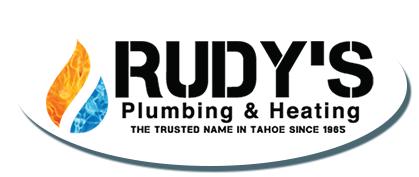Freestanding Stoves

A Brief Overview...
A Freestanding Stove is usually one of the simpler installations and is the obvious choice if you are replacing your old wood stove. Rudy's will run a gas line to come up behind the unit (to hide it), and the venting can be set up in a few different ways. Although all freestanding models have fan kits, the contemporary models tend to come stock with them, and cast iron models tend to come stock without. Fans help distribute the heat quicker by 'destratifying' the hot and cold air layers (ie. heat rises, cold sinks) much like a ceiling fan. A fan is recommended if the unit is intended to be used primarily for heat, and secondarily for ambience.
Most freestanding stoves are currently being made in Direct Vent (DV) versions. This makes it easy to utilize the old smoke pipe already going thru your roof (if that's what you have now, that is). Effectively, the old pipe becomes the fresh air return vent, and the exhaust vent passes thru the center of it in a separate pipe. Standard Direct Vent (hard pipe) is run to the ceiling where a conversion kit (made for 8 5/8" 10 1/2" or 13" Outer Diameter smoke pipe) makes the transition thru the rafters. The top part of the conversion kit then converts it back to standard pipe for connecting to a vertical cap.
Or, if you plan on re-doing your roof sometime in the near future, you may want to run DV pipe all the way up and flash it for the appropriate size all at once. Then you can get rid of the smoke pipe you may never use again.
Another very common way to use Direct Vent is to simply run a 24" pipe vertically up from the freestanding stove and then run a 90 degree section from it out the wall to a sidewall cap. For Tahoe, we use high-wind caps exclusively.
In older homes and cabins, a B-Vent can be used quite effectively and is usually a little less expensive than a Direct Vent installation. B-Vent draws its air for combustion from inside the room. The reason it works well in older homes is because they usually 'breathe' well (ie. leaky). This can be advantageous in controlling moisture related problems like mold - something that newer homes seem to have more issues with.
VENTING:
(Not just a way to relieve frustration...)A Brief Overview...
Direct Vent is a system of drawing combustion air from the same pressure area that it is vented to (ie. the pipes run to the same area outside the home). It was designed to overcome pressure differences that can exist between the house and the outside air. Pressure differences - usually a situation with negative pressure inside the home - can create drafting problems for the stove making it difficult to obtain a proper burn. A lot of newer homes that have been wrapped with a material like Tyvek exhibit these pressure differences. Direct Vent creates a completely closed system to the house, safely taking the elements of combustion outside. Therefore, only heat is allowed to enter the living area (which is really what we want anyway, right?). Use of Direct Vent is mandatory (a code requirement) if the heating unit is installed in a small enclosed space like a bedroom. Direct Vent has also proven to be 8-10% more efficient than B-Vent versions of the same stove. Standard sizes for hard pipe DV are 4" exhaust 6 5/8" outside (called '4&6'), or for larger stoves, 5&8.
Direct Vent systems are also designed for use with flexible ducting (not the dryer stuff!) allowing for snaking around angles in chimneys or studs that may be difficult to negotiate with hard pipe.
B-Vent: In older (most pre-1980) homes and cabins, a B-Vent can be used quite effectively and is usually a little less expensive than a Direct Vent installation. B-Vent draws its air for combustion from inside the room. The reason it works well in older homes is because they usually 'breathe' well (ie. a little leaky). This can however be advantageous in controlling moisture related problems like mold - something that newer homes seem to have more issues with. Standard size for B-Vent on gas fireplaces is 4".
Vent Free: ('room vented') appliances in this category are not recommended by Rudy's and are in fact illegal in California. We will not sell or install them. The products of combustion (carbon monoxide mostly) have to go somewhere right? You don't want them in your house!
